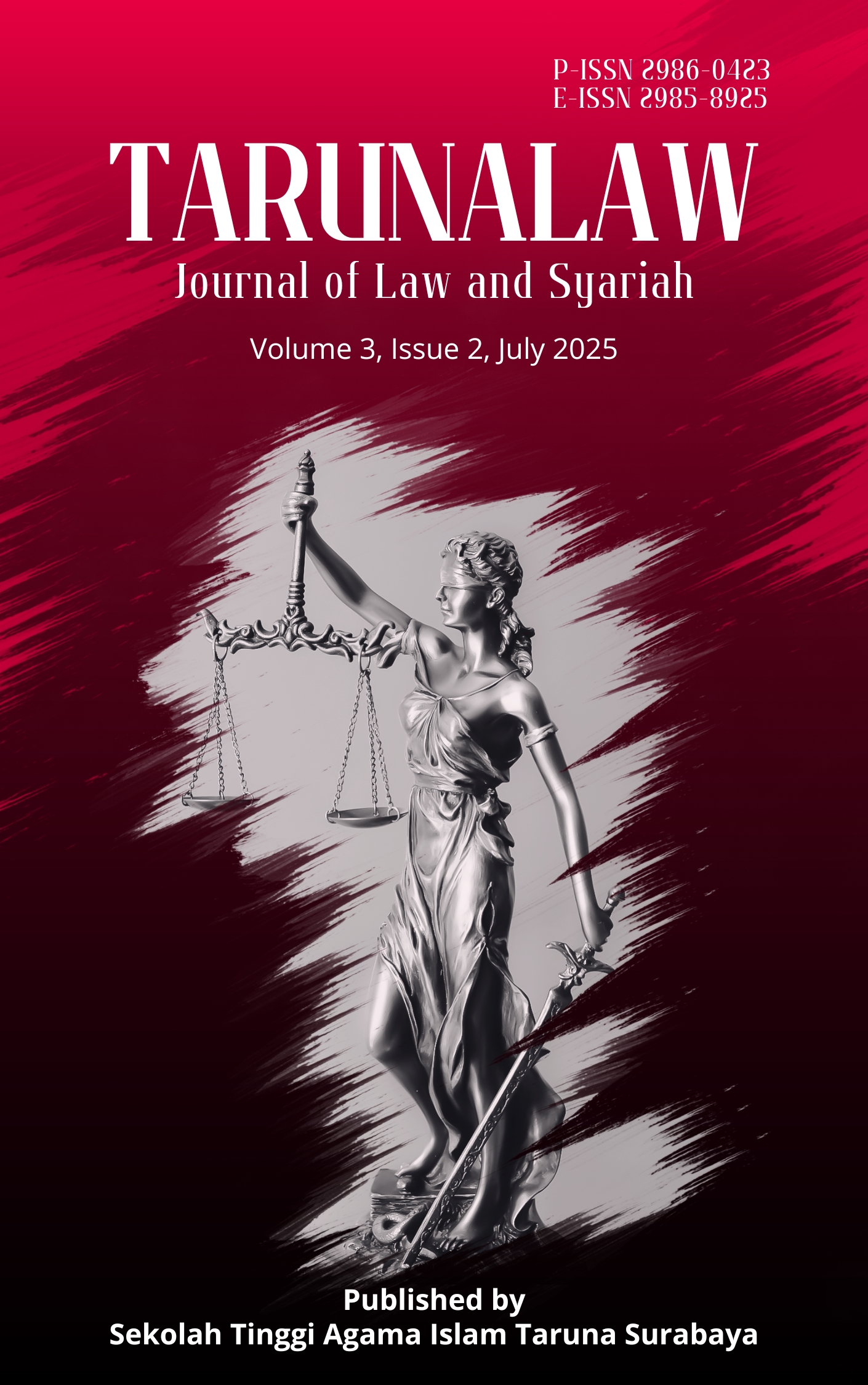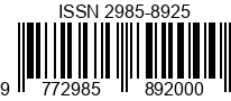PEMAHAMAN DASAR DALAM HUKUM ADAT
DOI:
https://doi.org/10.54298/tarunalaw.v3i02.464Keywords:
Customary Law, Diversity, Formation ProcessAbstract
Indonesia is a country with a very large diversity of indigenous tribes, and in each indigenous tribe in each region there are differences in the laws used in dealing with problems that occur in the respective regions of the indigenous tribe. The large number of indigenous tribes in each region gave rise to this article to provide practitioners with an understanding of fundamental knowledge about customary law in the territory of Indonesia. This study uses a juridical-normative method with a conceptual approach and a study of laws and regulations. The results of this study emphasize the importance of understanding the concept and definition of customary law itself. In addition, this article also highlights that customary law communities still maintain the validity of customary law until now because they believe that decisions made through customary justice mechanisms against a violation are able to present a sense of justice. Not only that, customary justice is also considered capable of restoring social and spiritual balance that is disturbed due to customary violations. And also with the many cultural diversities in Indonesia, it also provides differences related to the understanding or definition of customary law in each region, so that in this article there is how to define customary law in the Bugis and Minangkabau regions. Of course, both regions also provide different definitions regarding what customary law is and also in the process of forming customary law itself there are several stages which are also discussed in this writing.
References
Agoes, Artati., (2001), Kiat Sukses Menyelenggarakan Pesta Perkawinan Adat Jawa (Gaya Surakarta dan Yogyakarta), Jakarta: Gramedia Pustaka Utama.
Aprilianti, and Kasmawati. Hukum Adat Di Indonesia. Bandar lampung: Pusaka Media, 2022.
Asikin, Zainal. Pengantar Tata Hukum Indonesia. Raja Grafindo Persada, 2019.
Aurelia, Jessica, Maria Natasha Rudijanto, Audrey Bilbina Putri, Gladys Felicia, Raphaellee Peters, and Jeane Neltje. “Tantangan dan Potensi Peradilan Adat sebagai Access to Justice melalui Pengakuan Hukum Adat dalam UUD 1945” 10, no. 8 (May 3, 2024). https://doi.org/10.5281/ZENODO.11108866.
Bewa Ragawino, Pengantar dan Asas-Asas Hukum Adat Indonesia, Fakultas Ilmu Sosial Dan Ilmu Politik Universitas Padjadjaran.
Cita Nafisa, Dkk , “Ruang Lingkup dan Sejarah Lahirnya Hukum Adat.” Jurnal Ilmiah Kajian Multidisipliner, Vol 8 no. 4 (2024): 2118-7302.
Cita, Nafisa, Azzahra Fadillah, Fatonah, and Denny Defrianti. “Ruang Lingkup Dan Sejarah Lahirnya Hukum Adat.” Jurnal Ilmiah Kajian Multidisipliner 8, no. 4 (April 2024).
Hadikusuma, Hilman Pengantar Ilmu Hukum Adat Indonesia Edisi Revisi. 2. Bandung: CV. Mandar Maju, 2014.
Hadikusuma, Hilman. Pengantar Ilmu Hukum Adat Di Indonesia. Bandung, 1992.
Hermansyah Soetoto, Erwin, Zulkifli Ismail, and Melanie Pita Lestari. Buku Ajar Hukum Adat. 1. Malang: Madza Media, n.d.
Ishaq. Pengantar Hukum Indonesia. Jakarta: Raja Grafindo Persada, 2016.
Soekanto, Soerjono. Hukum Adat Indonesia. Raja Grafindo Persada, 2015.
Yuliyani, Allya Putri. “Peran Hukum Adat dan Perlindungan Hukum Adat di Indonesia.” Jurnal Hukum dan HAM Wara Sains 2, no. 09 (September 29, 2023). https://doi.org/10.58812/jhhws.v2i09.648.
Zulherman Idris, “Identifikasi Hukum Adat (Perspektif Bahagian Kajian Sosiologi Hukum)” Jurnal Equitable, Vol 6 no. 2 (2021): 121-134.
Downloads
Published
How to Cite
Issue
Section
License
Copyright (c) 2025 Muhammad Aqil Alfatoni, Enru, Artha, Mahendra

This work is licensed under a Creative Commons Attribution-ShareAlike 4.0 International License.
Authors who publish with this journal agree to the following terms:
- Authors retain copyright and grant the journal right of first publication with the work simultaneously licensed under a Creative Commons Attribution-ShareAlike that allows others to share the work with an acknowledgement of the work's authorship and initial publication in this journal.
- Authors are able to enter into separate, additional contractual arrangements for the non-exclusive distribution of the journal's published version of the work (e.g., post it to an institutional repository or publish it in a book), with an acknowledgement of its initial publication in this journal.
- Authors are permitted and encouraged to post their work online (e.g., in institutional repositories or on their website) prior to and during the submission process, as it can lead to productive exchanges, as well as earlier and greater citation of published work (See The Effect of Open Access).














